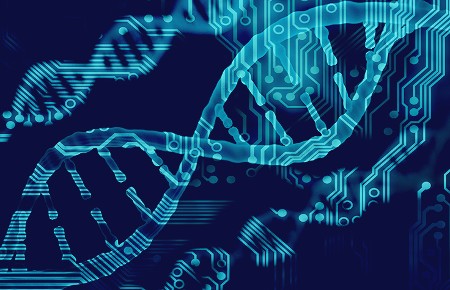In 1994 two Cambridge University UK chemists began working on a new method to sequence DNA. Four years later they filed patents and in 2007 Illumina, Inc., a San Diego, California acquired the technology which was seen to be a real breakthrough in sequencing the human genome.
Yesterday, the two were awarded the Millennium Technology Prize for 2020 (delayed by COVID-19), sponsored by the Technology Academy Finland (TAF). Shankar Balasubramanian and David Klenerman not only received the award but also one million Euros.
Their technology provides for fast, accurate, low-cost and large-scale genome sequencing, human or otherwise which has already begun to have a transformative impact on the fields of genomics, biology and medicine. It represents a million-fold improvement in speed and cost when compared to the first sequencing of the human genome which back in 2000 took more than 10 years at a cost of one billion dollars. Today’s cost amounts to one thousand dollars, one ten-thousandth the price.
How does their invention work?
Called NGS, it involves fragmenting DNA samples into hundreds of small pieces that are then decoded on a chip using fluorescently coloured nucleotides. A fluorescence detector identified the colour-coded nucleotides to determine the DNA sequence of all of the pieces to create an entire genome which is assembled using a sophisticated computer program. The technology can sequence billions of pieces in parallel fashion which makes for a very accurate and cost efficient operation.
The technology today is being used to track the changes to the genome of COVID-19 variants and thus is helping to advance the creation of booster vaccines to supplement those already created. NGS should help us to find cures for future pandemics as researchers speed up their ability to decode viral genomes.
The technology also allows researchers to identify why individual immune responses to COVID-19 are different, identifying why some people are far more adversely affected by the virus. This should help in treating infected patients who experience exaggerated inflammatory responses to the infection.
The technology is also revolutionizing both biological and biomedical research. It is being used in cancer, rare diseases, infectious medicine, and sequencing-based non-invasive prenatal testing. It can rapidly define the genetic risk genes in patients with rare diseases, and is helping to define new drug targets as well antibody and gene therapies. Because the technology gives us a better picture of the specific genetic bases for many cancers it has become the defacto standard in personalized therapeutic treatments of the disease.
And in biological fields like agriculture, ecology and the study of biodiversity, NGS is giving us a rapid way to document the genome of tens of thousands of organisms.
The awarding of this, the tenth prize since it was first offered, is unique in the fact that it is the first time two recipients have been honoured. States Marja Makarow, Chair of the Technology Academy of Finland, “Collaboration is an essential part of ensuring positive change for the future. Next-Generation Sequencing is the perfect example of what can be achieved through teamwork and individuals from different scientific backgrounds coming together to solve a problem.” She continues, “The technology pioneered by Professor Balasubramanian and Professor Klenerman has also played a key role in helping discover the coronavirus’s sequence, which in turn enabled the creation of the vaccines – itself a triumph for cross-border collaboration – and helped identify new variants of COVID-19.”
A final interesting note, of the nine previous winners of the Millennium Technology Prize, three have gone on to win a Nobel Prize.








